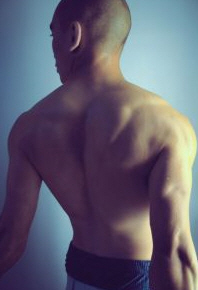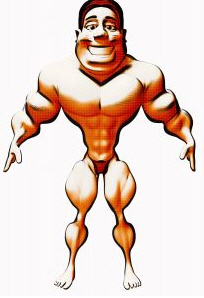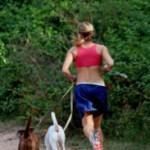 Gluteal muscles are the work horses of most of your activities. And gluteal strength training will not only improve the amount of work you can do but the appearance of your backside. No one likes a sagging behind! Gluteal strength training is important to many sports related activities as well. Strong glutes will help the average person climb stairs, walk longer and do daily activities with more grace. They will also help the ice skater, runner, biker, and soccer player perform at higher levels.
Gluteal muscles are the work horses of most of your activities. And gluteal strength training will not only improve the amount of work you can do but the appearance of your backside. No one likes a sagging behind! Gluteal strength training is important to many sports related activities as well. Strong glutes will help the average person climb stairs, walk longer and do daily activities with more grace. They will also help the ice skater, runner, biker, and soccer player perform at higher levels.
You may not even know that your gluteus medius muscle is weakened until you present to your doctor or therapist with an injury. Many runners with overuse injuries of the lower extremities will have poor function of the gluteus medius and have learned to work in an inefficient manner thus placing stress on muscles that weren’t designed to work in that fashion.
The gluteal muscle begins at the top of the hip and inserts on the surface of the greater trochanter (top of the leg). This muscle is responsible for bringing the thing inward, rotating in and out. During running it acts to stabilize the pelvis so the hips don’t move more than 7-9 degrees from parallel to the ground. If the muscle isn’t strong enough it produces a waddling motion that will result in injury to the lower legs.
To properly evaluate the motion of the hips and gluteal muscles during running the therapist will have to use video analysis. Often runners will be able to adapt their technique to offload a weak or fatigued gluteal muscle making the evaluation of the dynamic function inaccurate.
Some of the more common adaptations that people make for poor gluteal strength are a trendelenburg gait, knee drift either in (medial) or out (lateral), or a same side shift of the trunk. To improve gluteal strength and help rehabilitation of lower leg injuries an athlete should engage in gluteal strength training. This can be done at home or at the gym.
 Using the ‘keep it simple’ principle, an athlete can perform exercises at home with some basic material and a resistance band from the therapist or purchased at a sporting goods supply store. If the athlete already belongs to a gym there are some exercises that can be incorporated into their routine that will improve gluteal strength, decrease risk of injury and reshape the area.
Using the ‘keep it simple’ principle, an athlete can perform exercises at home with some basic material and a resistance band from the therapist or purchased at a sporting goods supply store. If the athlete already belongs to a gym there are some exercises that can be incorporated into their routine that will improve gluteal strength, decrease risk of injury and reshape the area.
At home you will need either a step bench, stairs or stacks of stable books, and a resistance band if you have one. The first gluteal strength training move is called the ‘bridge’. This is a movement you may have used in gym class in grade school or high school. However, it is very functional and useful – and requires nothing but flat ground and your own body weight. Start by lying on your back with your knees bent. Keep your feet hip width apart, squeeze your glutes and lift your hips until you have a straight line between your knees. Leave your shoulder blades on the floor. Hold this for 10 – 30 seconds. Repeat 3-5 times.
You see some coaches using this exercise so the athlete will bridge with the shoulders off the ground and bouncing but doing this as an isometric contraction as described above is actually more beneficial because it mimics the role of the muscles more closely.
Another exercise to use in gluteal strength training is to use a step bench, stairs or a stable stack of objects. You can actually build a rudimentary bench in the garage that will work perfectly fine. If you can, start with a bench that is 6 inches and work toward 18 inches high. Stand in front of the bench, place your right leg on the top and lift your body to the top, keeping your knee behind your toe and your weight in your heel. This movement makes you use your gluteal muscles to lift your body. As you learn this movement you can add light weights to your shoulders to increase the resistance. Step up with your right leg and then your left.
An alternative to this movement is to start at the top of the bench and step off the back landing gently on your toes and then raising back up to the top placing your weight in your heel and keeping your knee behind your toes.
The lunge also uses your gluteal muscles, but only when done correctly. Done incorrectly you’ll be using your quadriceps and placing too much stress on the knee. Stand straight and move your right foot forward approximately 2-3 feet. Using slow, controlled movements ‘lunge’ forward so your thigh of your right leg is parallel to the floor. Keeping your weight in the heel of your right foot raise your body up over the right leg. You would have essentially taken a long step with your right leg. Make the movements very controlled to get the maximum benefit from the exercise. Many people do this exercise in one place by bringing the right leg back under the body. This movement doesn’t give as much work to the gluteal and hamstring muscles. Keep the knee behind the ball of the forward foot and the weight in your heel to protect the knee.
Using gym equipment you should be able to use the hip abductor and hip adductor machine, hamstring curls and definitely incorporate the lunge and bridge.
Resources:
Body Results: Targeting the Gluteus Medius
http://www.bodyresults.com/e2gluteusmedius.asp
Running Physio: Gluteus Medius – Evidence Based Rehab
http://www.running-physio.com/glutemed/
Lifetime: Unleash the Power of Strength Training
Medical NewsToday: Best Gluteus Maximus Training
http://www.medicalnewstoday.com/releases/37143.php
Sports Injury Bulletin: Gluteal Muscles Exercises
http://www.sportsinjurybulletin.com/archive/gluteal-muscles-excercises.html
PhysioAdvisor: Gluteal Strengthening Exercises
http://www.physioadvisor.com.au/8285250/bottom-exercises-gluteal-strengthening-exercises.htm


Leave a Reply